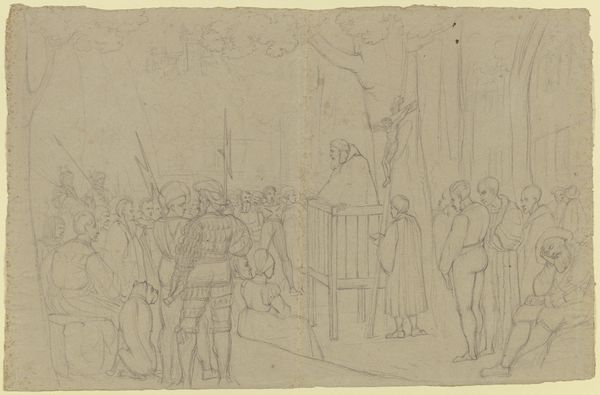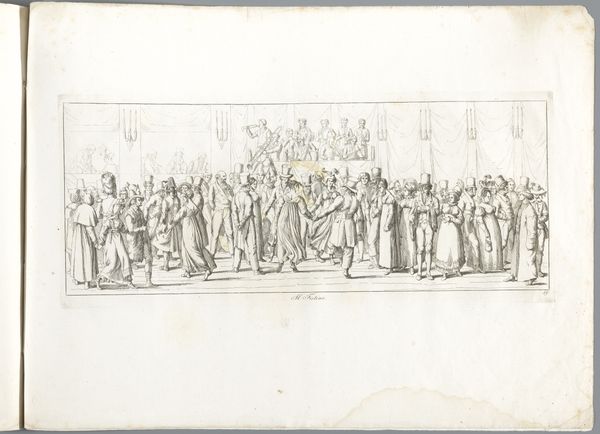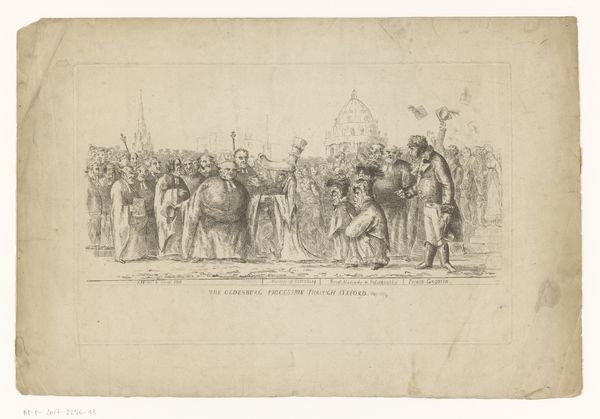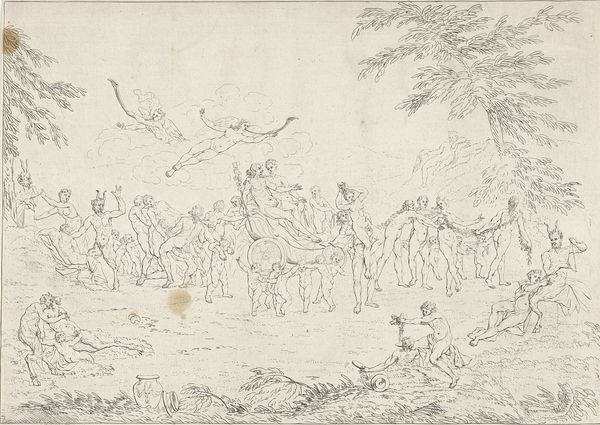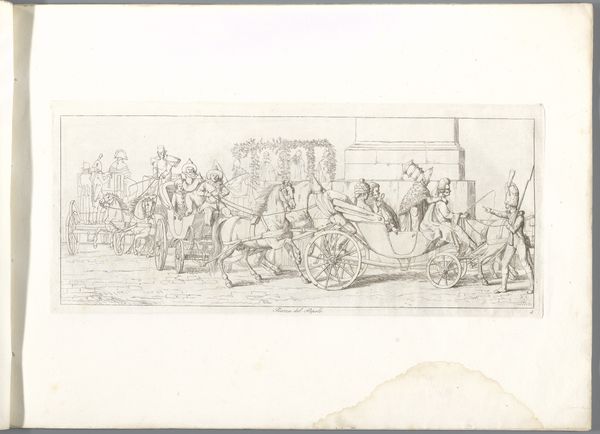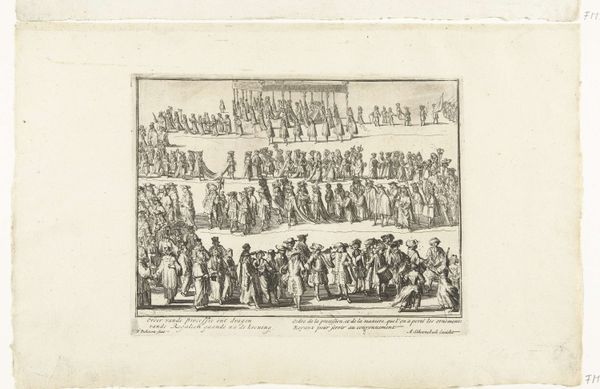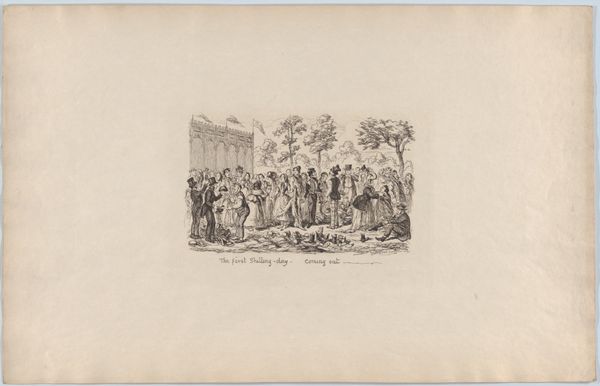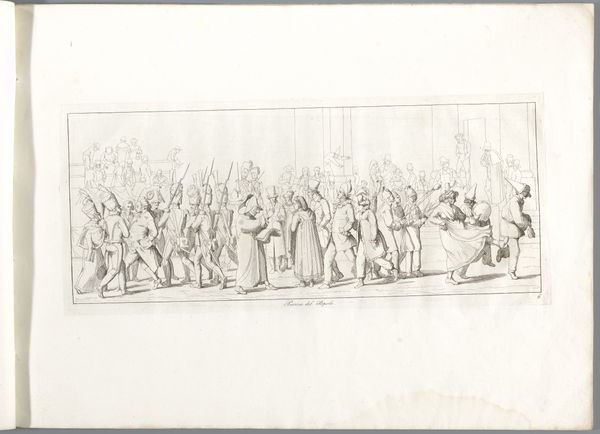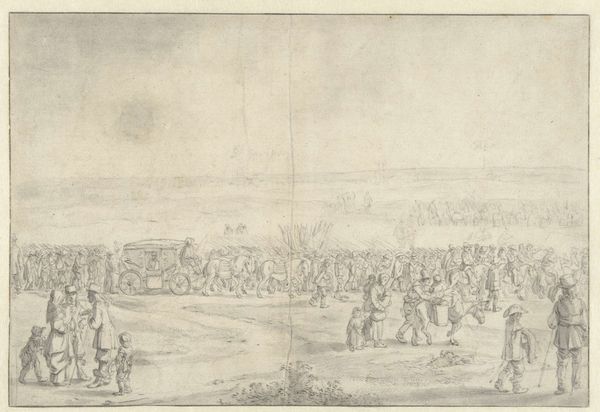
Het orakel bepaalt de namen van de jongeren die aan Minotaurus geofferd moeten worden 1811 - 1816
0:00
0:00
reiniervinkeles
Rijksmuseum
drawing, pencil, engraving
#
drawing
#
neoclacissism
#
figuration
#
pencil
#
line
#
history-painting
#
engraving
Dimensions: height 237 mm, width 339 mm
Copyright: Rijks Museum: Open Domain
Editor: Here we have "The Oracle Determines the Names of the Youths to be Sacrificed to the Minotaur," a pencil and engraving drawing made between 1811 and 1816 by Reinier Vinkeles, currently residing at the Rijksmuseum. The figures seem so deliberately posed, it has such a staged and sorrowful feel to it. How do you interpret this work in its historical context? Curator: The drawing reflects the Neoclassical fascination with antiquity. However, let's think about it critically. It presents a vision of "democracy" built upon rituals of human sacrifice rooted in exploitative power dynamics, which raises some interesting questions about whose stories get told, and who is rendered disposable within grand narratives. Editor: So, beyond just illustrating the myth, it’s potentially commenting on it? I'm wondering what this suggests about the prevailing views on power, sacrifice, and perhaps even social justice at that time? Curator: Exactly. Think about how the enlightenment ideals of reason and progress were used to justify colonialism and oppression. By idealizing a distant past and adopting an aesthetic that often minimized emotion, were these artists potentially complicit in reinforcing structures of power that mirrored those of their own time? What's visually absent, like any emotional rawness or an acknowledgement of exploitation of its subjects, may tell a bigger story. Editor: That's fascinating. I never thought about Neoclassicism from that angle, in terms of historical narratives! Curator: Indeed. By exploring art through diverse socio-political frameworks we can begin to investigate historical viewpoints. Ultimately, by unpacking those contexts we arrive at better interpretations. Editor: This really changes how I will look at Neoclassical art from now on! I’ll be considering who has the power and how social hierarchies were represented—or actively erased.
Comments
No comments
Be the first to comment and join the conversation on the ultimate creative platform.
